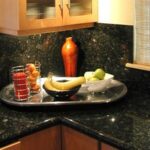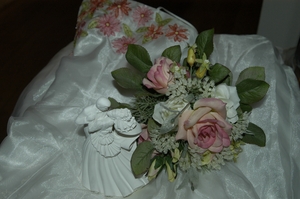Creating a Tuscan kitchen faux paint treatment on your kitchen cabinets project is an inexpensive way to resurface your kitchen cabinets on a budget.
This Tuscan Kitchen Cabinet Resurfacing project is easy to complete and will add a distinctly Tuscan flare to the cabinets in your kitchen. The entire faux Tuscan Kitchen Cabinet Resurfacing project can be completed for under $150 depending on the size of your kitchen and how many Tuscan kitchen cabinets you will be painting. This is a great way to update your kitchen on a budget in one weekend.
Tuscan inspired colors are warm earth tones. They include colors like terra cotta, warm mustard yellows, earthy warm browns, glowing oranges with a hint of brown, and warm grays. Keep these in mind when you are choosing the paints for your Tuscan Kitchen Cabinet Resurfacing.
You will need:
Blue tape in ¼” width (2 roles for a large kitchen)
Egg Shell Or Semi Gloss Paint (3 Colors, One base color,
1 – 2 earthy warm colors
3″bristle brushes (3)
Roller brush
4 Paint trays
Glaze Medium
Scissors or exacto knife
In a high-end kitchen with authentic Tuscan Kitchen Cabinet Resurfacing look you would normally see a high end Tuscan or custom kitchen.
I like to start this project by painting all of the cabinets receiving the faux tile treatment in the kitchen a warm Tuscan inspired color that will be the base color. There is no white left in this project, so this is a good way to prevent any white area from seeping through your Tuscan faux paint job. A nice warm gray color is perfect for the base. A color like Realist Beige from Sherwin Williams would work well for this project.
Let this dry.
For this Tuscan Kitchen Cabinet Resurfacing project it would be best to create a few different color looks for your kitchen cabinets based on your two paints. Have one color be closer to paint color #1, the second color be close to paint #2, and create a third unique paint color by mixing an equal combination of the two paints. Mix your colors in their own paint trays and add some glaze. The glaze medium will keep your Tuscan inspired paint wet for a longer period of time, so you can do this mixing on the wall. If you want though, you could go ahead and mix these colors in their own paint trays.
Color suggestions: for a bold Tuscan look try colors like Reddened Earth and Tatimi Tan. For amore neutral warm Tuscan color palette try a combination of colors like Bagel and Diverse Beige form Sherwin Williams.
When you are applying your paint on the Tuscan Kitchen Cabinets do not over work it. You want some variation in the paint. The paint should not be a flat or solid color.
Once you have the base coat of you’re faux Tuscan paint treatment painted you can added some extra detail and interest with a little splattered paint. Take a clean brush and lightly dip it in one of you original two paint colors. Lightly splatter it on the kitchen cabinet where you have been working. Very lightly. You could also lightly stipple the wall with a very dry brush with very little paint on it. This will create that dimpled uneven effect that natural tile often has. Just remember, you can always add more, so work in small amounts.
Here are a couple web sites with good photos of authentic Tuscan tile used in a kitchens to help you establish a color palette. http://www.morrisblack.com/pages/bakitchen/kitchen3.html is a great site for some Tuscan color inspiration. http://www.lindapaul.com/tile_murals/Tuscan_Kitchen_Tile_Backsplash.htm has some great examples of intricate backsplashes and other colors use in traditional Tuscan kitchens. Although these are murals, you can see in some of the photos that they use colors.
Once you have finished painting your faux Tuscan Kitchen Cabinet Resurfacing, carefully remove the painter’s tape. Allow your paint treatment to dry for at least twenty-four hours. You can also paint on some polyurethane.


